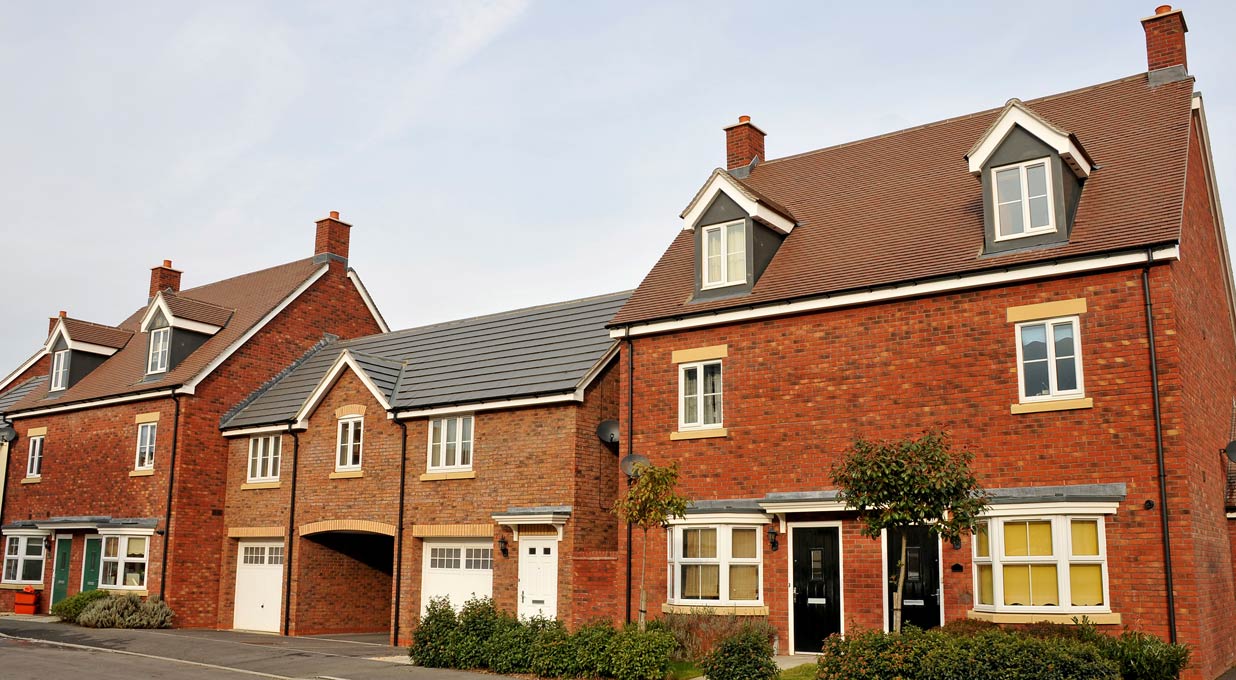Persimmon’s half-year revenue rose 10.9% to £1.3bn. This was driven by a 4.6% uplift in new home completions to 4,445, and a 2.7% rise in average selling prices to £263,288.
Underlying operating profit was broadly flat at £152mn. This reflects the slightly lower margins on prior orders due to build-cost inflation and increased use of incentives.
Free cash flow improved from an outflow of £298mn to an outflow of £46mn. At the half-year mark, the net cash position stood at £350mn.
Persimmon has seen a “strong pick up in enquiries and visitors”, and the private order book has grown 28% to £1.1bn. Full-year completions are now expected to be at the top end of prior guidance, which points to around 10,500 new homes.
An interim dividend of 20p per share has been announced, in line with the prior year.
The shares rose 1.1% following the announcement.
Our view
Persimmon’s had an impressive start to the year, as revenue growth came from a healthy mix of both higher volumes and prices.
Given Persimmon’s houses are priced more than 20% below the newbuild national average, selling prices were always likely to prove more resilient in times of uncertainty. The fact that the order book is growing at pace is an encouraging sign too, and improves visibility over future revenues.
Operating profits were flat during the period, somewhat bucking the trend given that many of Persimmon’s peers are seeing double-digit declines. The higher revenues were offset by build cost inflation baked into previous projects and the increased use of incentives to encourage buyers to sign on the dotted line. Most of this weakness looks to have been felt now, so we expect to see profitability start to improve over the second half.
There are also the in-house materials businesses, which we see as a key differentiator and should help operating margins head back in the right direction. This vertical integration gives quick and cheaper access to key materials. For example, 54% of the bricks used are sourced in-house, giving a £1,800 saving per plot.
While the near-term outlook for Persimmon and the housing market remains uncertain, the significant pent-up demand for homes in the UK remains unchanged. Announcements from the new government, particularly around reforms to the national planning framework, are encouraging for the whole industry. But it’ll likely be a while before the impact of these changes is felt by housebuilders.
We’re not calling for a step-change improvement in fortunes for 2024. But the recent interest rate cut should help ease affordability pressures and keep momentum going into the second half. Alongside lower build-cost inflation, real wage growth and strong responses to marketing efforts, we see room for growth into 2025.
In recent years, Persimmon’s been conservative about investing in new land. The group’s been able to hold back thanks to its extensive land bank, which is amongst the biggest compared to peers. But with land prices beginning to fall again, we wouldn’t be surprised to see more plots of land get scooped up.
The balance sheet is in decent shape. Cash flows are improving and there’s a healthy amount of net cash on hand to support the current 4.2% forward dividend yield.
With green shoots of a recovery beginning to emerge in the housing market, there’s scope for an improvement in sentiment towards the sector. After a challenging period, Persimmon’s valuation remains below the long run average. But broadly speaking, Persimmon’s trading at a premium to most of its peers, which we see as a reflection of underlying strengths. The group looks to be in as robust a position as it could be for now, but at the current valuation, we prefer other quality names in the sector.
Environmental, social and governance (ESG) risk
Most housebuilders are relatively low risk in terms of ESG, particularly for those in Europe. However, there are some environmental risks to consider, from direct emissions to the impact of their buildings on the local ecology. The quality and safety of their buildings is also a key risk.
According to Sustainalytics, Persimmon’s management of ESG risk is strong.
The group collects and discloses scope 1, 2, and 3 emissions and has strong emission reduction plans in place. It has also committed to its homes being net zero carbon in use by 2030. However, there’s currently limited disclosure on what percentage of materials are recycled. Disclosures around product and service safety is also lacking.
Persimmon key facts
All ratios are sourced from Refinitiv, based on previous day’s closing values. Please remember yields are variable and not a reliable indicator of future income. Keep in mind key figures shouldn’t be looked at on their own – it’s important to understand the big picture.

